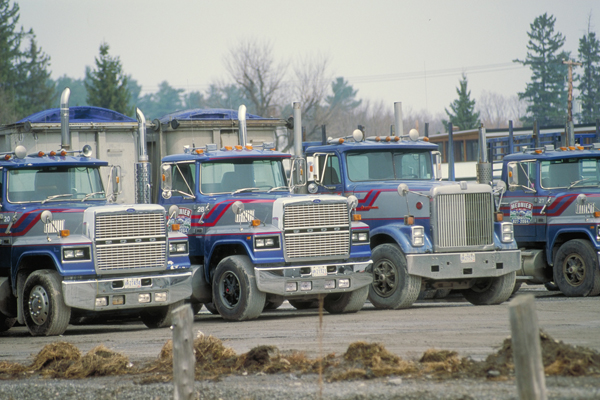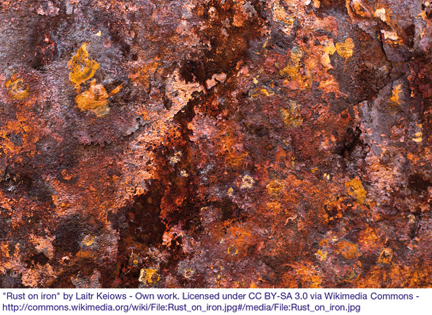Basics of Corrosion Control
Greg Lawrie, president, Pro Fleet Care
Special Collaboration

With the introduction of pre-emergent salts, rust has become an added cost of doing business fleet owners and managers. Automotive manufacturers have been successful in increasing the life span of their vehicles, but no one anticipated the impact of these next-generation salts.
Although these salts have been embraced by local governments, environmental groups and the snow contracting community, fleet managers are extremely distraught. Not taken into account were the effects these salts would have on vehicles and infrastructure. These new salts are able to stick to the vehicles longer and are more active at lower temperatures. As a result, equipment is experiencing severe body rot, parts failures and something new – wiring harness issues – all because of corrosion.
Staying on top of corrosion issues can extend the life of the vehicles and equipment, reduce repair costs and downtime, and project a clean, professional, rust-free image in the marketplace.
Choose the right product
Generally 3 types of products are used to control corrosion:
- Cathodic protection (CP) – cathodic protection basically reduces the corrosion rate of a metallic structure by reducing its corrosion potential, by bringing the metal closer to an immune state. CP is commonly used on pipelines, water vessels and metal structures. Although some have tried to use CP to protect vehicles, the corrosive environment in which those vehicles are used is different. Vehicle corrosion is primarily caused by deicers, which cause a chemical reaction with the metal.
- Wax and tar products – During the mid-1980s, wax and tar products dominated the rust control industry. They were seen as having great coverage that could withstand the elements. However, these products do not penetrate hard-to-reach areas of the vehicle. They also dry out and crack, which allows salt and moisture to get trapped between the product and the metal surface and accelerates corrosion. Reapplying yearly is ineffective, since these products will not penetrate areas that have been left exposed because of cracking or shrinkage of prior applications. If you use wax or tar products, make sure the vehicle is dry, since these products will sit on water and accelerate corrosion.
- Oil products – oiling has been used for many years. It penetrates hard-to-reach areas and neutralizes the harmful effects of rust. Oiling a rusty vehicle will help stop the corrosion process in its tracks. For oiling to work, it should be done yearly or as required.
 When it comes to oiling, the less viscous (thinner the oil), the better its ability to penetrate into hard-to-reach areas of the vehicle. On the other hand, the more viscous (heavier) the oil, the longer it will protect the treated metal. When using an oil product, look for one that has been designed specifically for corrosion control and consider using less viscous product for doors, fenders, hoods, engine compartments and hard-to-reach areas such as under the fuel tank. For areas such as wheel wells, frame rails and the underside, consider using a more viscous product, such as a wax oil. Because you want to use thin oil for much of the oiling of your vehicles and equipment, do not park them on a paved or interlocked drive because the oil will drip for 24 to 48 hours. When it comes to oiling, the less viscous (thinner the oil), the better its ability to penetrate into hard-to-reach areas of the vehicle. On the other hand, the more viscous (heavier) the oil, the longer it will protect the treated metal. When using an oil product, look for one that has been designed specifically for corrosion control and consider using less viscous product for doors, fenders, hoods, engine compartments and hard-to-reach areas such as under the fuel tank. For areas such as wheel wells, frame rails and the underside, consider using a more viscous product, such as a wax oil. Because you want to use thin oil for much of the oiling of your vehicles and equipment, do not park them on a paved or interlocked drive because the oil will drip for 24 to 48 hours.
A common practice has been to reuse motor oil. Although the oil is free, used oils will often contain acids that can be harmful and promote corrosion. These oils are also not healthy for the applicator because carbon and acids become airborne during the application process, increasing the chance of inhalation or contact with exposed skin.
Where to apply
The application process may also differ. Some applicators may only spray the underside of the vehicle or only the body panels. Consider a complete process that protects the vehicle from the underside all the way to the roofline. It is important that holes are drilled in doors, “A pillars,” tailgates and other inaccessible areas where rust can be prevalent.
Many products are not safe to be applied to the engine compartment because they will gum up the components. There are less-viscous products that can help protect the wiring harness and other moving parts but will not affect the engine’s ability to perform as normal (check with product manufacturer before applying).
Finding and fixing corroded wires in a wiring harness can become costly, both in terms of repair expenses and loss of productivity from operational downtime. There is nothing quite as frustrating as having staff standing around while their trucks are sitting in the shop.
Preventive maintenance
Cleaning, greasing and spraying winter equipment, such as salt spreaders, plows, snowblowers and hand tools, during post-season maintenance eliminates the opportunity for corrosion to occur during the summer. Treating your fleet during off-peak times will allow you more time to make sure equipment is protected properly. Moisture is most active in the spring, but an annual spray will eliminate corrosion for the year.
Suggestions for proper maintenance:
- The equipment should be washed so that salt buildup has been removed.
- A salt eliminator can be used but is not necessary; a good rust control product will neutralize the salt.
- Once equipment has been washed, grease all bearings so that water and salt are pushed out of the bearing.
- Spray spreader chains with a penetrating rust inhibitor. Over time, this penetrant will look dry to the touch. Re-apply with the same product or use a heavier product that has more body. Always us a penetrant first, because thicker products will not penetrate, causing the chains to bind over time.
- For salt spreaders, consider spraying the penetrant on the outside of gas engines, including into the start cord housing. It will keep parts lubed and eliminate the harmful effects of corrosion. When you are finished spraying the engine, use a thicker product (wax oil) to spray the rest of the equipment.
- Before treating vehicles, make sure that the underside and wheel wells are not packed with mud, salt or snow.
- Store winter equipment in a dry location. If you are storing outdoors, cover equipment with a tarp and find a dry location, either on pavement, gravel or up and out of the way on top of a shipping/storage container (make sure the container is rated to take the weight and that the item is secure so that it will not fall off). Never store items where moisture is prevalent, such as on grass or in a salt dome.
The Automotive Protection Agency (APA) suggests most modern vehicles will experience mechanical and body deterioration from corrosion after 5 or 6 years, and that rust deterioration will usually result in increased maintenance and repair costs or a reduced market value for the vehicle on resale. With the varying rust control options available, the product and process will determine whether rust control is a needless expense or smart investment for your company’s equipment fleet. However, an effective annual rust control program can be worth its weight in gold. |